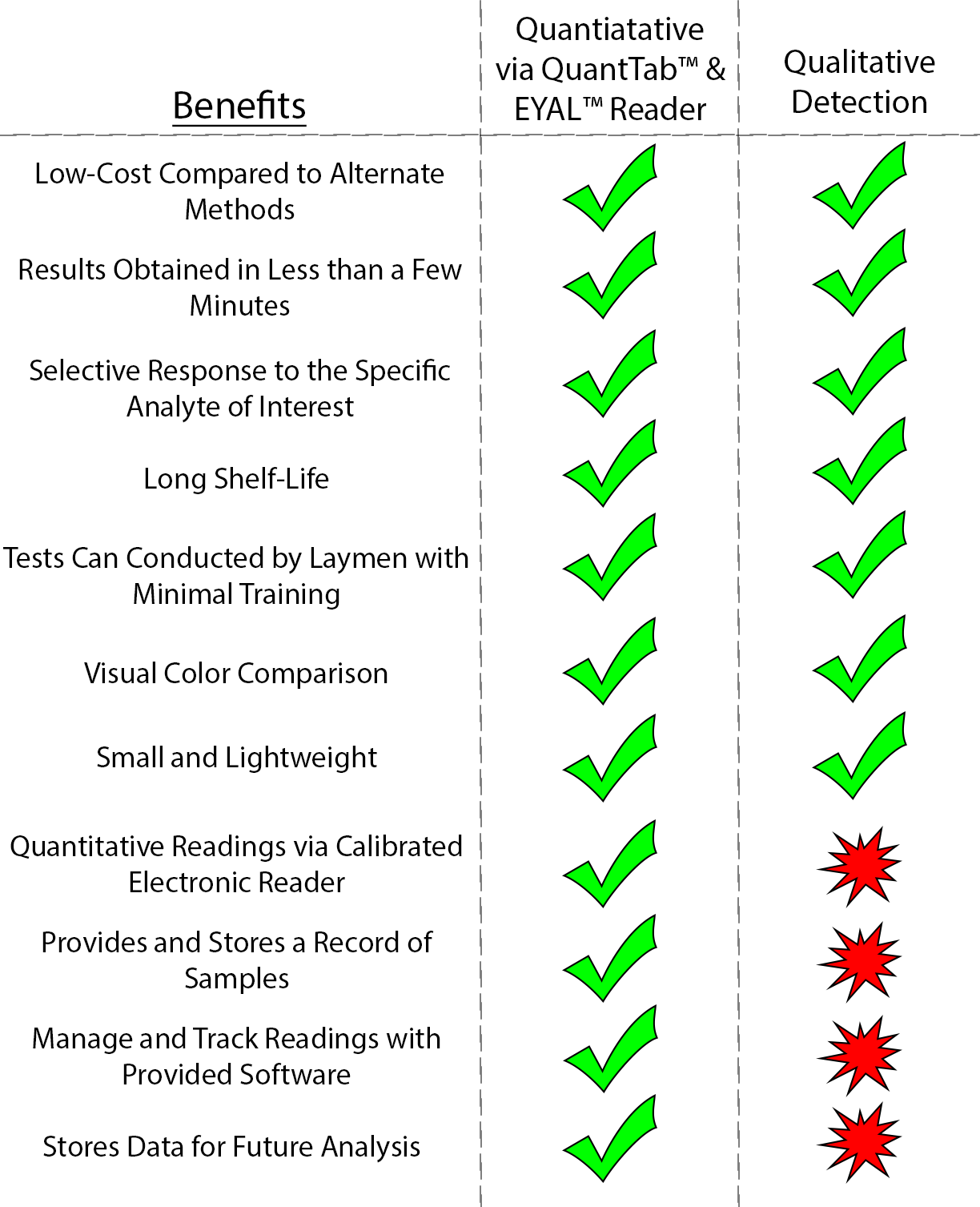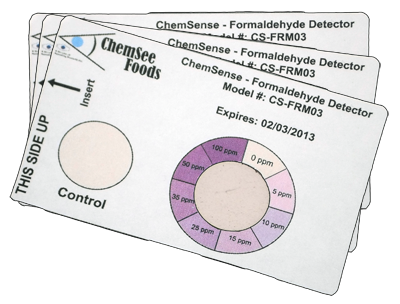Product Overview
Chemsee has developed unique methods and techniques for the detection of adulterants in milk. These products have been designed to meet the specific demands of the dairy industry and the end user. Currently the following analytes can be tested for in milk:
Detection is avalaible quantitatively via the QuantTabs™ Determination Tabs used in conjunction with the EYAL™ Quantitative Reader. Also, qualitative detectors are avaliable for low-cost screening and testing via rapid visual analysis test strips.

Nitrite Detection
- Proteins and amino acids, and,
- Inorganic nitrogen compounds, mainly nitrates and nitrites.
Nitrate Detection
In a recent study, the measured nitrate concentration in milk ranged to be from 0.3 to 417.7 ppm with an average concentration of 92.7 ppm. Nitrates occur natrually in the soil, water and food that cows consume and pass to the excreted milk. Once the Nitrates enter our system they can be then converted into nitrites in our saliva and digestional trac. Once in the acidic conditions of the stomach, Nitrites can react with other amines to create Nitrosoamines which are cancerous compounds. Nitrosoamines are compounds that are similar to what are found in many cigarettes and other tabacco products.
Formaldehyde Detection

Formaldehyde is a toxic material that can kill bacteria and viruses as well as damage human cells. Manufacturers sometimes add Formaldehyde to milk to extend its shelf-life.
Although adding formaldehyde to foods is forbidden in many countries, some manufacturers still add it. Consumers of milk should know if these products contain excessive and dangerous amounts of formaldehyde. Inspectors of food need to know if formaldehyde was added purposely and illegally to the food.
Excess exposure to formaldehyde is known to increase the possibilty of cancer and also cause breathing difficulties. Women in the early stages of pregnancy are also highly sucectible to exposure to Formaldehyde, as it is suspected to cause birth defects and other complications with early child development.